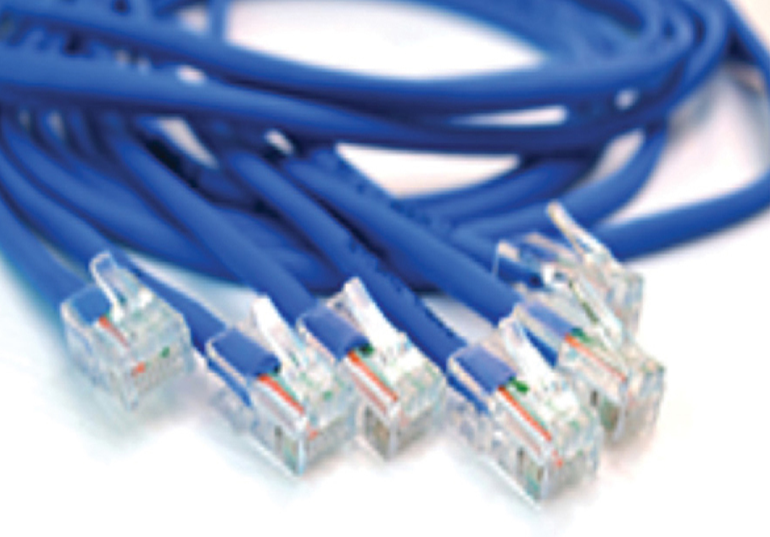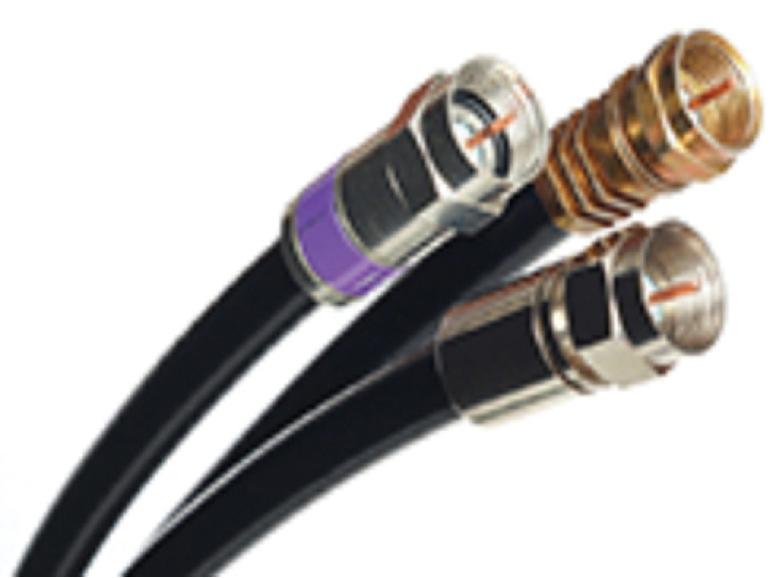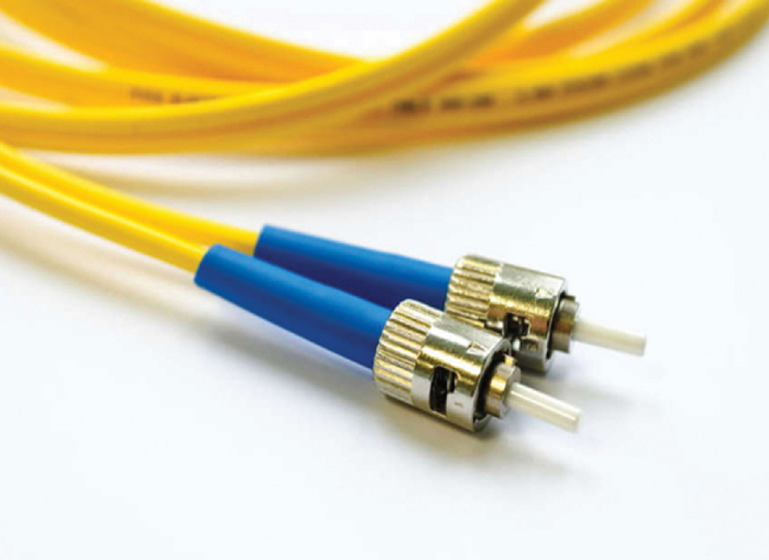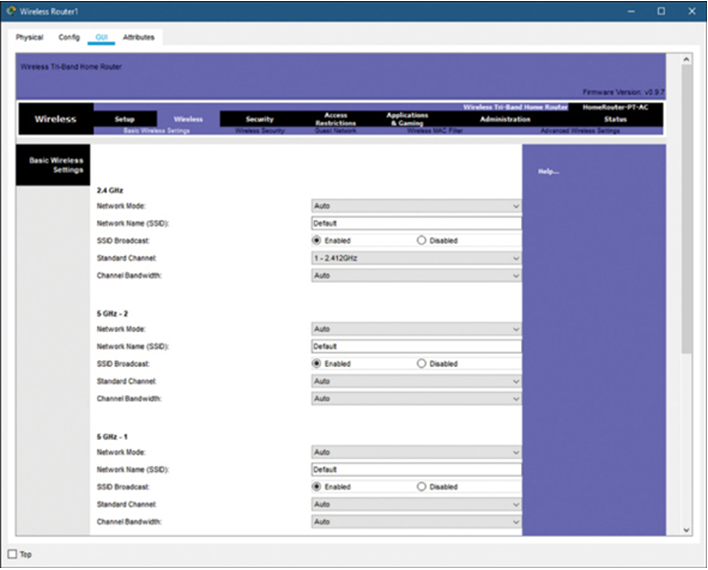Category 5e (Figure 4-4) is the most common wiring used in a LAN. The cable is made up of 4 pairs of wires that are twisted to reduce electrical interference.

Figure 4-4 Example of Category 5e Cable
Coaxial Cable
Coaxial cable (Figure 4-5) has an inner wire surrounded by a tubular insulating layer, that is then surrounded by a tubular conducting shield. Most coax cables also have an external insulating sheath or jacket.

Figure 4-5 Example of a Coaxial Cable
Fiber-Optic Cable
Fiber-optic cables can be either glass or plastic with a diameter about the same as a human hair and it can carry digital information at very high speeds over long distances. Fiber-optic cables have a very high bandwidth, which enables them to carry very large amounts of data. One example of a fiber-optic cable is shown in Figure 4-6.

Figure 4-6 Example of a Fiber-Optic Cable
A number of standards have been developed to ensure that wireless devices can communicate. They specify the RF spectrum used, data rates, how the information is transmitted, and more. The main organization responsible for the creation of wireless technical standards is the IEEE.
A number of standards have been developed to ensure that wireless devices can communicate. They specify the RF spectrum used, data rates, how the information is transmitted, and more. The main organization responsible for the creation of wireless technical standards is the Institute of Electrical and Electronics Engineers (IEEE).
The IEEE 802.11 standard governs the WLAN environment. There are amendments to the IEEE 802.11 standard that describe characteristics for different standards of wireless communications. Wireless standards for LANs use the 2.4 GHz and 5 GHz frequency bands. Collectively these technologies are referred to as Wi-Fi.
Another organization, known as the Wi-Fi Alliance, is responsible for testing wireless LAN devices from different manufacturers. The Wi-Fi logo on a device means that this equipment meets standards and should operate with other devices that use the same standard.
Wireless standards are constantly improving the connectivity and speed of Wi-Fi networks. It is important to be aware of new standards as they are introduced because manufacturers of wireless devices will implement these standards quickly in their new products.
Do you have a wireless network in your home? Do you know what standards are supported by your wireless router?
The Packet Tracer Basic Wireless Settings interface is shown in Figure 4-7. Wireless routers using the 802.11 standards have multiple settings that have to be configured. These settings include the following:
• Network mode — Determines the type of technology that must be supported. For example, 802.11b, 802.11g, 802.11n or Mixed Mode.
• Network Name (SSID) — Used to identify the WLAN. All devices that wish to participate in the WLAN must have the same SSID.
• Standard Channel — Specifies the channel over which communication will occur. By default, this is set to Auto to allow the AP to determine the optimum channel to use.
• SSID Broadcast — Determines if the SSID will be broadcast to all devices within range. By default, set to Enabled.
Note
SSID stands for Service Set Identifier.

Figure 4-7 Packet Tracer Basic Wireless Settings Interface
